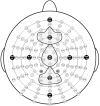Changes in Neural Activity Underlying Working Memory after Computerized Cognitive Training in Older Adults
- PMID: 27877122
- PMCID: PMC5099139
- DOI: 10.3389/fnagi.2016.00255
Changes in Neural Activity Underlying Working Memory after Computerized Cognitive Training in Older Adults
Abstract
Computerized cognitive training (CCT) may counter the impact of aging on cognition, but both the efficacy and neurocognitive mechanisms underlying CCT remain controversial. In this study, 35 older individuals were randomly assigned to Cogmed adaptive working memory (WM) CCT or an active control CCT, featuring five weeks of five ∼40 min sessions per week. Before and after the 5-week intervention, event-related potentials were measured while subjects completed a visual n-back task with three levels of demand (0-back, 1-back, 2-back). The anterior P3a served as an index of directing attention and the posterior P3b as an index of categorization/WM updating. We hypothesized that adaptive CCT would be associated with decreased P3 amplitude at low WM demand and increased P3 amplitude at high WM demand. The adaptive CCT group exhibited a training-related increase in the amplitude of the anterior P3a and posterior P3b in response to target stimuli across n-back tasks, while subjects in the active control CCT group demonstrated a post-training decrease in the anterior P3a. Performance did not differ between groups or sessions. Larger overall P3 amplitudes were strongly associated with better task performance. Increased post-CCT P3 amplitude correlated with improved task performance; this relationship was especially robust at high task load. Our findings suggest that adaptive WM training was associated with increased orienting of attention, as indexed by the P3a, and the enhancement of categorization/WM updating processes, as indexed by the P3b. Increased P3 amplitude was linked to improved performance; however. there was no direct association between adaptive training and improved performance.
Keywords: ERPs (Event-Related Potentials); P3; P3a; P3b; cognitive aging; computerized cognitive training; n-back task; working memory.
Figures









References
-
- American Psychiatric Association (1994). Diagnostic and Statistical Manual of Mental Disorders. Washington, DC: American Psychological Association.
Grants and funding
LinkOut - more resources
Full Text Sources
Other Literature Sources
Medical

